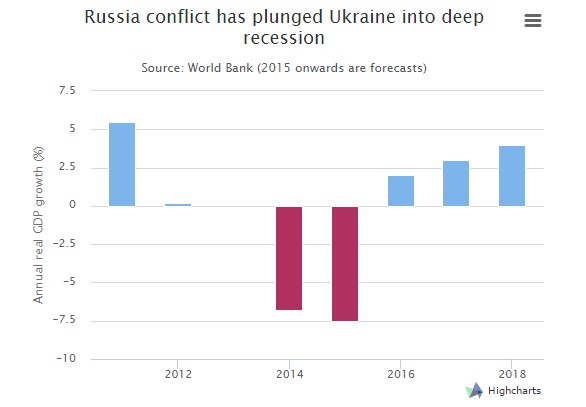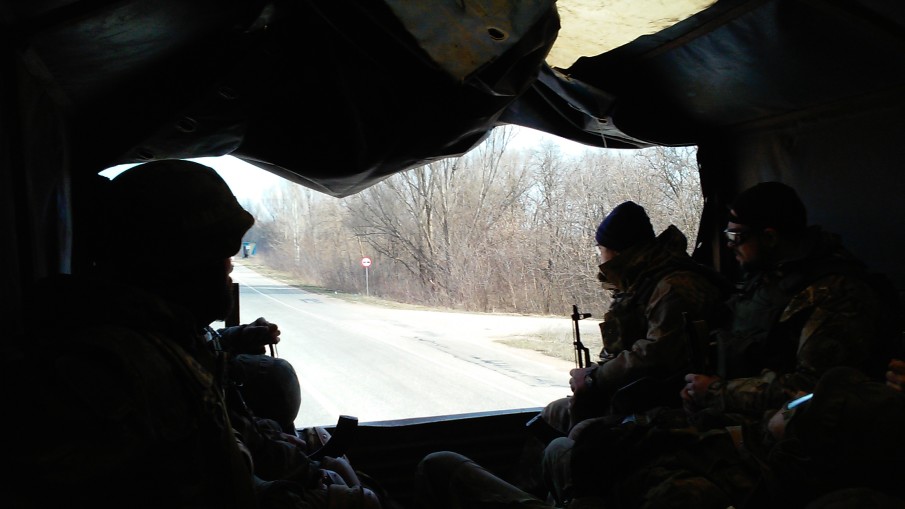As Russian forces have shifted their focus to Syria, pro-Russian separatists in Eastern Ukraine have decided to abide by the ceasefire and further, have begun disarmament. At a timely summit on 2 October, 2015, in Paris, Ukrainian President Petro Poroshenko, French President Francois Hollande, German Chancellor Angela Merkel, and Russian President Vladimir Putin met to discuss upholding the Minsk peace agreements. By the end of the summit, an announcement was made by Ukrainian President Poroshenko that the withdrawal of light artillery from the Ukrainian side would commence that night. Accordingly, the pro-Russian separatist leader and Russian Federation President Vladimir Putin also assured world leaders that his side would take corresponding actions.
This withdrawal and agreement is a repeat of the Minsk II agreement from earlier this year. In February of 2015, it was agreed that all armament with a caliber over 100 millimeters would be removed from the front, to include tanks and other armored vehicles. Another redundancy found in this agreement is from a July ceasefire agreement, in which supporting forces of the two fronts were to be moved a minimum of 15 kilometers from their present locations as means to prevent accidental or malicious initiation of hostilities between Ukrainian and pro-Russian forces. Still, both sides are stalling and leaving their options open by agreeing to a 41-day withdrawal plan.
https://youtu.be/6xgAQgUbUT4
This could be a coincidence, but there never really is such a thing as a coincidence. Russia is cutting its losses in Ukraine under extreme economic sanctions from the West and being ostracized from the G8 and other economic decision-making platforms. Its backup plan in China is also suffering an economic crisis. Now Putin has found a new enemy to fight while defending his old ally in Syria. Russia can now rally its population in nationalist fervor and hopes to generate global support and redemption by setting its sights on ISIS. Syria allows Russia to promote regional counter-Western rhetoric and reassure its allies abroad that they won’t be completely forgotten in their time of crisis.

Russia has plenty of its own problems it wants to ignore, such as the stunted front in Moldova, Georgia, Ukraine, and the Arctic, and the Kremlin’s ongoing failures against the Islamist insurgency in the North Caucasus region and Chechnya. Russia has serious concerns about an ISIS victory, primarily in that the reverberations of an invigorated ISIS could mean further destabilization within Russian territory. Syria is also a strategic foothold in the Middle East, a strongpoint much like Israel is to the U.S. Russia has invested heavily in Syria in the form of economic infrastructure in oil and gas, in military securities such as the Tartus Port, and in the naval base and airfield at Lataki.
Russia’s hybrid warfare, which has been launched again and again against its neighbors, has been fueled by its homegrown propaganda machines such as Russia Today, which have depicted Ukraine as neo-Nazi, and not as a country, but as a conglomeration of various Russian states. Now the Russian war machine is pointed toward Syria, its longtime ally in the Middle East. Russia must “save the world from Islamofascism while discarding Ukraine like so many other failed productions. Russia now seeks to simply secure the border with Ukraine. They’ve continued to make empty threats by way of its puppet leaders in Eastern Ukraine and propaganda platforms in Moscow about war against Ukraine, hinged on a future NATO alliance.
Russia now seeks to reassert its global influence and once again become economically stable by becoming a player in the war against ISIS. We will see an ongoing yet distrustful cooperation between Western allies and Russia as, like it or not joint, operations in the region become a reality. The Ukraine conflict is dying down, and most of what little action is ongoing in the country is internal diversion and sabotage units conducting harassment and reconnaissance on the lines, as well as a good number of drunks on machine guns. These problem soldiers are found on both lines.
Already have an account? Sign In
Two ways to continue to read this article.
Subscribe
$1.99
every 4 weeks
- Unlimited access to all articles
- Support independent journalism
- Ad-free reading experience
Subscribe Now
Recurring Monthly. Cancel Anytime.












COMMENTS
You must become a subscriber or login to view or post comments on this article.